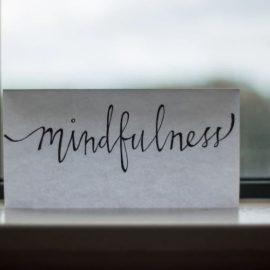

This article is an excerpt from the Shortform book guide to "She Comes First" by Ian Kerner. Shortform has the world's best summaries and analyses of books you should be reading.
Like this article? Sign up for a free trial here.
What is the female sexual response cycle? What are the steps of this cycle?
According to Ian Kerner in his book She Comes First, there are four steps in the female sexual response cycle: excitement, plateau, orgasm, and resolution. Some people have criticized the idea of the cycle, while others have improved on it.
Take a look at the female sexual response cycle to determine if it’s actually real.
The 4 Steps of Sexual Response
Once you understand the clitorial network and its key players, Kerner explains that you must understand the female sexual response cycle. Kerner divides the process into four steps: excitement, plateau, orgasm, and resolution.
The first step in the process of female sexual response is excitement. When a woman first becomes aroused, her mind and body prepare her for a sexual encounter. First, chemicals and hormones are released that emotionally prepare her for sex. Then her body responds—breasts increase in size, blood flow to the pelvic area increases, the clitoral head protrudes from the hood, and the vagina begins to lubricate.
After excitement is plateau, the stage where arousal tends to increase until it’s released through orgasm. During the process, muscle tension will build, the clitoral network will become more sensitive and the clitoral head will go back into its hood, and breathing and heart rate will increase. Right before orgasm, the clitoral head will emerge again.
After plateau, the next step is orgasm. Orgasm is when the built-up tension from plateau releases all at once. When orgasm occurs, the vaginal walls contract rhythmically and the woman will experience waves of pleasure for 10-20 seconds on average. Some women release ejaculate—Kerner notes that this is a unique alkaline liquid from the female equivalent of the prostate, not urine.
(Shortform note: Kerner’s 10-20 second estimation of the average female orgasm may actually be on the short end—longer female orgasms can last between 20 seconds and two minutes, and one study showed that 40% of women polled experienced 30-60 second orgasms. Further research shows that, as Kerner explains, some women ejaculate and some don’t—but the statistics on the commonality of female ejaculation aren’t settled—a 2017 study reported that nearly 70% of women ejaculate, while other estimates range from 10% to 50%. And while Kerner claims that female ejaculate is not urine, recent studies show that female ejaculate is mostly urine—the alkaline secretions Kerner mentions make up a marginal percentage of the liquid.)
The final step is resolution—the stage where she returns to a pre-aroused state. Kerner explains that this stage varies greatly between men and women. Women take much longer than men to return to this state, meaning that they remain aroused longer and can have consecutive orgasms. Further, whereas men tend to be tired after orgasm, women tend to want more interaction like talking and cuddling.
Criticism of the Four-Phase Model
In the book, Kerner describes the female sexual response with the traditional “four-phase” model. However, this model has been widely criticized as having a male bias.
First, the traditional model assumes that “excitement”—the mental desire and physiological preparation for sex (like the vagina lubricating and the penis getting erect)—can happen automatically without any physical stimulation. While this is the experience of many men, it isn’t true for most women. Further, the model asserts that the sexual response process is linear—you experience excitement, plateau, orgasm, and resolution in that order and then the process is over.
While this is mostly true for men, women can move forward and backward through the steps and experience the model as a continual cycle—resolution can lead seamlessly back into excitement and start the process over again. In response to this criticism, multiple newer models have been developed including the triphasic model, the circular model, and the dual-control model. We’ll elaborate on each of these models in later commentary.
The Triphasic and Dual-Control Models of Sexual Response
As we explained previously, critics argue that the four-phase model has a male bias. In Come As You Are, Emily Nagoski explains that the triphasic model amends this criticism by adding to and re-conceptualizing the two steps discussed above, excitement and plateau. The triphasic model presents three steps of sexual response: desire, arousal, and orgasm. Desire occurs when your brain responds to stimuli and you feel that you want sex. Arousal is when your body responds to your desire—it prepares for sex and moves toward orgasm, often through physical stimulation. Orgasm is when your body has hit peak arousal and releases tension through orgasm.
The triphasic model differs from the four-phase model in two main ways. First, whereas the four-phase model implies that desire and arousal happen simultaneously during the excitement stage, the triphasic model asserts that our brains must experience desire before our bodies can respond with arousal. Second, the triphasic model combines the stages of excitement and plateau into “arousal” and the stages of orgasm and resolution into “orgasm.”
However, the triphasic model fails to explain the even more detailed neurological process of desire. This is where the dual-control model is introduced. The dual-control model explains that two systems help us determine whether or not we want to have sex. The first system is the Sexual Excitement System, and its role is to scan our environment for stimuli that sexually excite us. The other system is the Sexual Inhibition System, and it scans our environment for stimuli that suggest we shouldn’t have sex. If the Sexual Excitement System overrules the Sexual Inhibition System, we experience desire.
The Circular Model of Sexual Response
Resolution is the final stage of the four-phase model. However, Kerner’s explanation of the resolution stage departs from the traditional four-phase model by asserting that women may be able to restart the sexual response process from stage one almost immediately after stage four. This explanation of the resolution phase more closely aligns with the more recent circular model of sexual response.
The circular model proposes four stages of sexual response: seduction (encompassing the triphasic stage of desire), sensations (encompassing the excitement and plateau stages of the four-phase model), surrender (the orgasm stage), and reflection (the resolution stage of the four-phase model). The main differences between the circular model and the four-phase model are that the circular model adds the desire stage before the excitement stage and asserts that a satisfying sexual experience may cause the female resolution phase to lead seamlessly back to stage 1, desire, like Kerner explains. So while Kerner uses the linear four-phase model to explain the female sexual response process, his explanation of the resolution stage suggests that he actually views the female sexual response process as cyclical, not linear.

———End of Preview———
Like what you just read? Read the rest of the world's best book summary and analysis of Ian Kerner's "She Comes First" at Shortform.
Here's what you'll find in our full She Comes First summary:
- Why traditional sexual practices leave women unsatisfied
- Why men should ensure their female partner orgasms first
- An instruction manual on how to satisfy women and engage in the best sex possible






